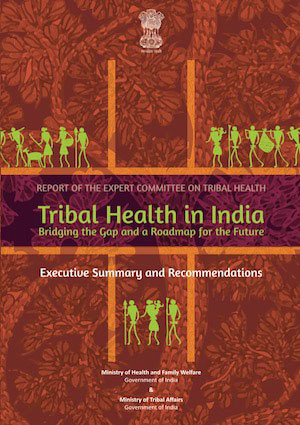A health program for the people by the people | For up-to-date information about Ashwini’s Community Health Programme, click here >>
The intervention on the Health situation of Adivasis started with the training of tribal women as Health Workers. Tribal women, who were till the other day, considered only as manual workers, suddenly became the key resource persons. Women who can diagnose illnesses, who can give medicines and assist in times crisis like deliveries. These Bettakurumba women were one of the first batch of HWs. […]
Doctors and the health staff visited the adivasi villages regularly – often situated at the midst of forests. People who were non-existent in the records of Government came forward to be part of the Health intervention and actively cooperated. […]
Preventive Care is at the core of the Community Health Programme. The main role of the Health Animators and the Sub-Centres is in giving the health knowledge to the adivasi families – particularly to the women and children. Health Education Sessions like this are routine during the village visits of the Health Animators. […]
Traditional and ‘Modern’ Houses
This is a picture of the traditional Tribal house. The non-avilability of the materials have forced people to innovatively design solutions which are appropriate for their village. In Veramanga, all the houses were designed and built by the adivasis themselves. A model housing project with the participation of the people. An example for external intervention in the housing sector – even while preserving the distinct adivasi identity. […]
The cultural traditions of the adivasi community is quite rich. Their stories, songs, music and other cultural expressions are very rich. Inspite of their oral traditions, they have survived for many centuries. In an effort to preserve them for posterity, AMS has undertaken many proactive steps in documenting the cultural forms. Cultural Festivals like this give a sense of pride to the adivasi youth and keeps the tradition continuing. […]
Mudumalai forests are a declared sanctuary for elephants. Bettakurumbas of this area are well-known for their skills in managing the elephants. These adivasis speak their own dialect, even to the elephants. The Government Forest Department has employed many elephants and the Bettakurumbas manage these elephants in these forests. […]
Paniyas are the predominant tribe of the Gudalur Valley. And with the most oppressed history. Having lived for many centuries as bonded labourers, many families have dared to come out of their bondedness due to the support of AMS. Many Paniya families own land, cultivate tea and have improved their social status. Like this boy, most of the paniya children are encouraged to go to schools by their illiterate parents. […]
The achievements of the adivasis have been remarkable in the last 15 years. They have changed their social status all by themselves and by tireless struggles. They have dreamt about good quality health care and education for their children – and have already achieved most of it. Now, the focus is in ensuring that the movement continues in the years to come – generation after generation. The support of all of you will be deeply appreciated.
Source: ASHWINI PHOTO GALLERY
Address: http://www.ashwini.org/gallery/index.htm
Date Visited: Tue Jun 23 2015 10:43:13 GMT+0200 (CEST)
“It was assumed that tribal people have same health problems, similar needs and hence the uniform national pattern of rural health care would be applicable to them as well, albeit with some alteration in population: provider ratio. The different terrain and environment in which they live, different social systems, different culture and hence different health care needs were not addressed.”– Abhay Bang, Chairman, Expert Committee on Tribal health (2018 Report of the Expert Committee on Tribal Health)
Learn more >>
Download Tribal Health in India PDF (35 MB) >>
Searchable file (backup):
PDF (OCR 70 MB) >>
